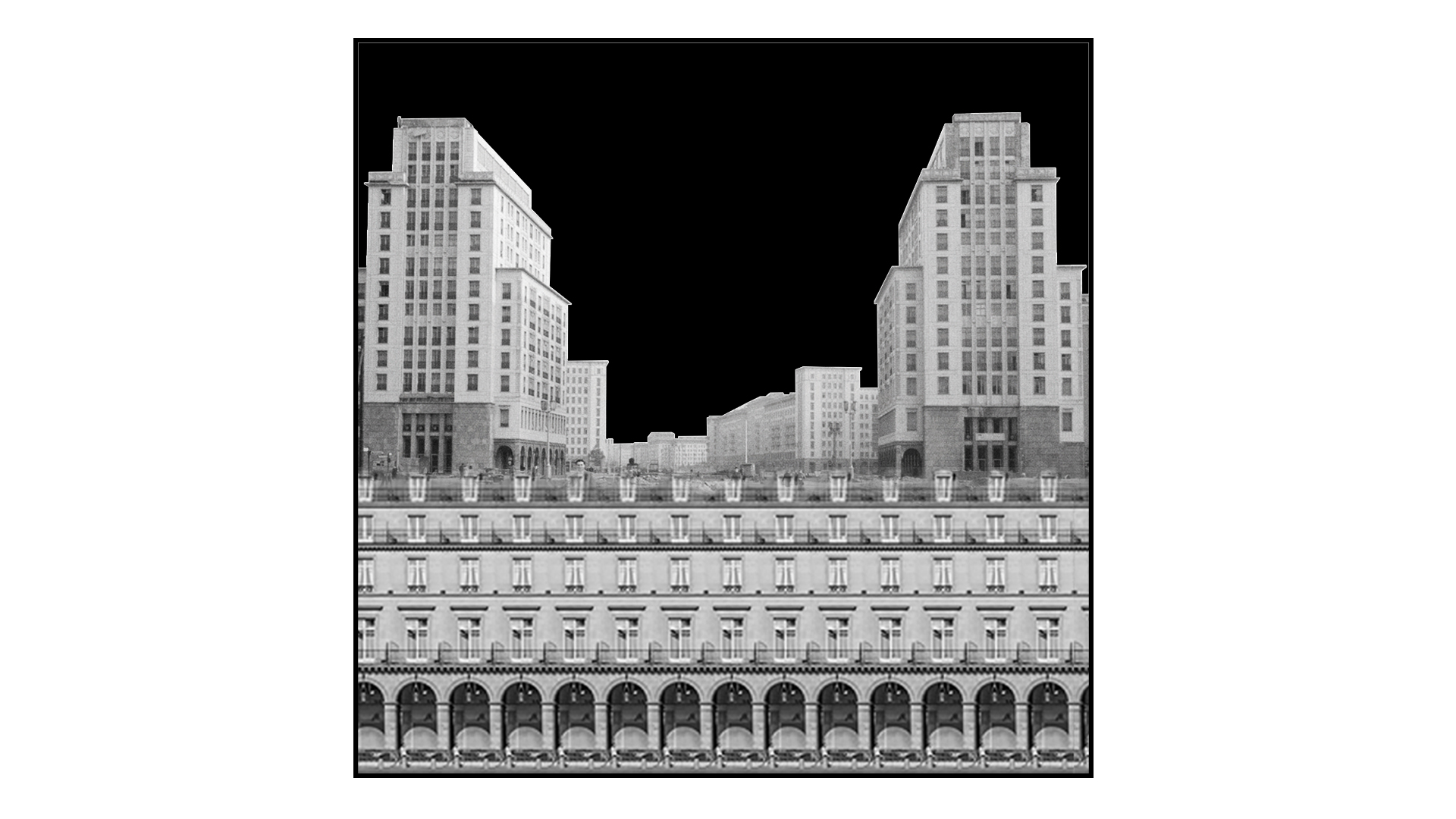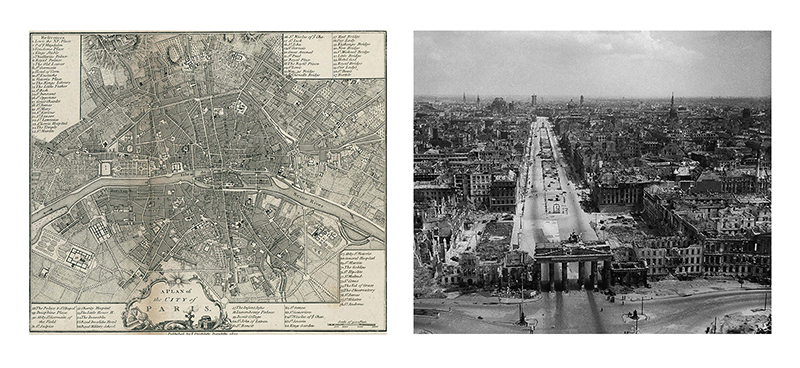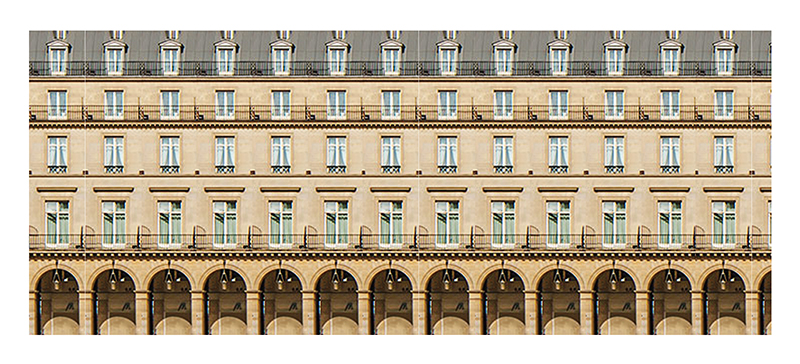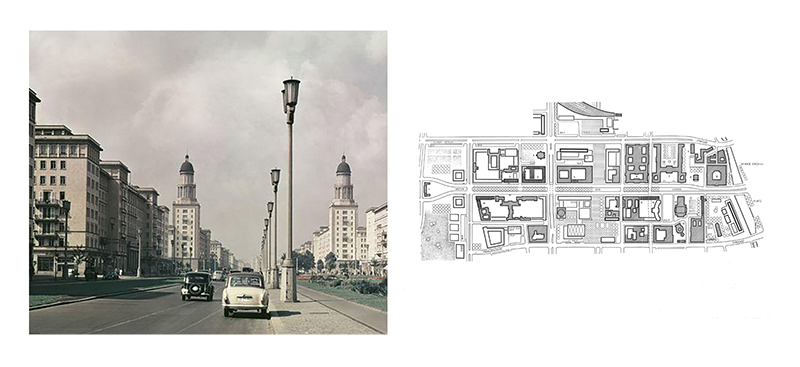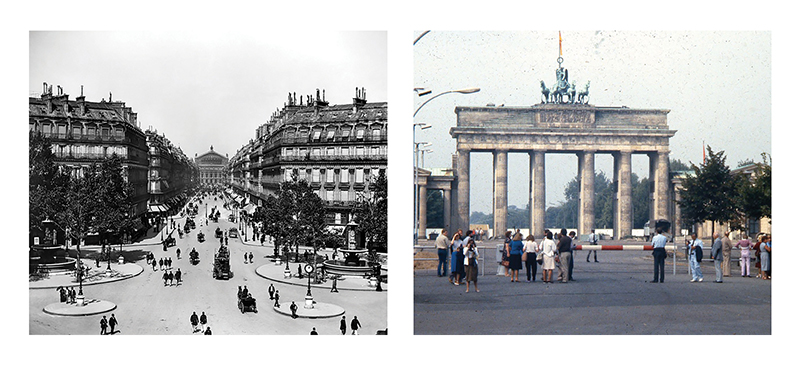In the middle of the 19th century, Paris is highly degraded. The increasing population along with the simultaneous expansion of industrial activities, has made the old urban space obsolete and inappropriate in terms of meeting the challenges in the new reality. A total remodeling process that is going to change the whole city, guarantees the creation of a new place, free of the problems from an unprecedented urbanization.
One hundred years later, the Second World War is over and the devastated Berlin comprises no longer a city. With the majority of urban structures seriously damaged, the site faces immediate problems. After covering some of the urgent needs, the invention of a new reality emerges as a necessity for the urban space. In East Berlin, this void is dealt with interventions that determine the new image of the city, by systematically erasing the traces of the war. (image 1)
The highways of the modern age are new places to be inhabited, while being shaped by these interventions. They comprise models of ideal cities in terms of organizing the urban space, adapted to each specific political, economic and social data.
In the first case, the ideal place, arises through the monumental environment of an absolute geometry formed by the linear axis, the continuous facades and the monument at the edge of the road. If rue de Rivoli is the experiment of this model, then rue de l’ Opera suggests its standard implementation. The repetition of this type through the whole city, provides a new tool for shaping the urban environment. (image 2)
In the latter case, the ideal place is carried out through symbolic forms, aiming at the recovery of a temporarily vanished historical identity, for the new socialist society. Stalinallee, with two towers at its very end and recurring luxurious and multifunctional units along its length, is a magnificent urban area leading to the city center. There, it meets with a newly made - old place, set up on Unter den Linden, while every trace of war is systematically removed. Successive buildings - monuments are combined with the structures of the new socialist regime, trying to impose a different image. (image 3)
However, the reality behind those perfect proportioned Pariss apartment buildings is not so perfect, the luxurious facades of the Stalinallee “Palace of the People” hide apartments that are anything but luxurious, while the historical buildings of Unter den Linden are not so historical after all. The new urban space clearly defines the parts of the city that are going to be visible and those required to remain hidden. Besides, the ideal place of these interventions, originates from the image of the city. That’s what the highways of modern times do. (image 4)

